Today’s review is a head-to-head comparison of two of the best and most well-known air purifiers on the market — Molekule vs. Dyson.
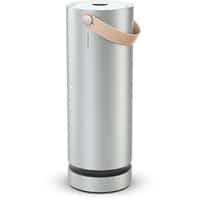
- Cleans Up To: 600 sq. ft.
- Filters: PECO & Pre-Filter
- Wifi Control: Yes
- Oscillation: No
- Dimensions: 8.25′ x 23′
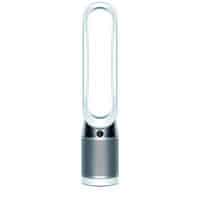
- Cleans Up To: 765 sq. ft.
- Filters: HEPA & Activated Carbon
- Wifi Control: Yes
- Oscillation: Yes
- Dimensions: 8.1′ x 41.5
What’s the better air purifier?

Molekule vs. Dyson
Both the Molekule and Dyson are high-end air purifiers capable of purifying the air in large spaces. Both performed extremely well during our tests, are easy to use, and well built. However, if we had to pick a winner it would be the Dyson Pure Cool TP04. While the build quality isn’t quite to the level of the Molkeule, its performance during our tests was better (reducing PM2.5 to 0.2, compared to Molekule’s 0.6). Perhaps most importantly, it’s also several hundred dollars less expensive.Check PriceBoth of these air purifiers offer top-of-the-line features and excellent air quality performance.
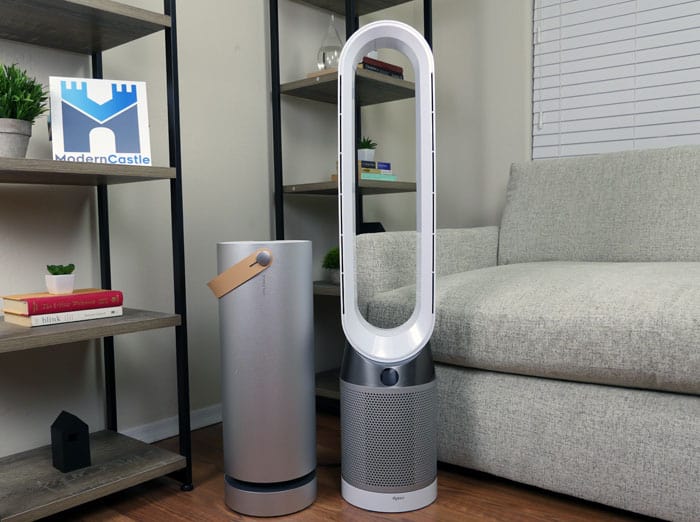
We’re going to be looking at all aspects of each of these machines to see how they really compare. There’s a lot of ground to cover so let’s get started.
Prefer to watch rather than read? We’ve got our full Molekule vs. Dyson comparison in video format here:
Molekule vs. Dyson Models
So right out of the gate, let’s talk about models.
| Molekule | TP04 | HP04 | DP04 | BP01 | |
|---|---|---|---|---|---|
 |  | 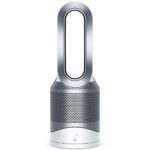 | 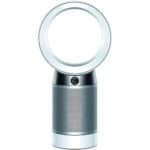 | 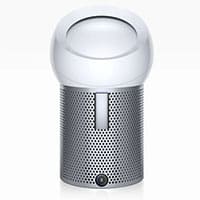 |
|
| Form Factor | Compact | Tower | Compact | Compact | Personal |
| Mode | Cooling Only | Cooling Only | Heat + Cooling | Cooling Only | Cooling Only |
| Oscillation | None | 350° | 350° | 350° | 70° |
| Airflow | Forward Only | Forward or Backward | Forward or Backward | Forward or Backward | Forward Only |
| Height | 23" | 41.5" | 30.1" | 27.2" | 15.78" |
| Amp Size | N/A | 8.1" diameter | 8.1" diameter | 13.9" diameter | N/A |
| Weight | 18 lbs. | 10.98 lbs. | 19.07 lbs. | 10.25 lbs. | 6.17 lbs. |
| Remote Control? | No | Yes | No | Yes | No |
| Wireless | Wifi-Enabled | Wifi-Enabled | Wifi-Enabled | Wifi-Enabled | Wifi-Enabled |
| Filter | PECO filter and pre-filter | Glass HEPA filter and activated carbon filter | Glass HEPA filter and activated carbon filter | Glass HEPA filter and activated carbon filter | Glass HEPA filter and activated carbon filter |
| Price | Check Price | Check Price | Check Price | Check Price | Check Price |
Molekule offers one model of air purifier. It doesn’t have any particular model number, it’s just called the Molekule.
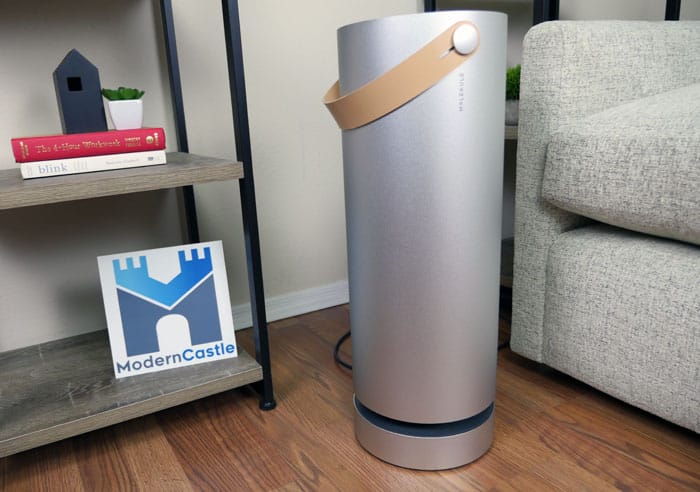
This is a medium-sized purifier that can treat up to 600 sq. ft. of air.
By comparison, Dyson has a much wider assortment of styles and features, ranging from compact personal air purifiers up to large tower style purifiers that can treat up to ~880 sq. ft.
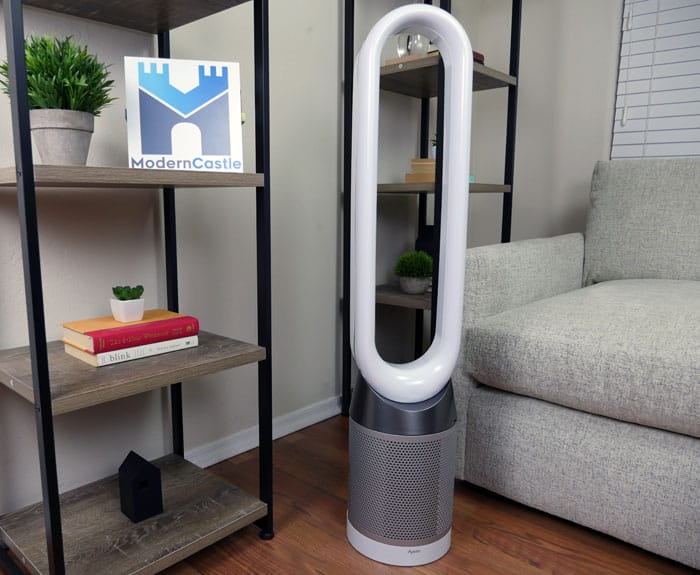
In order of smallest to largest, here is a list of all current Dyson models:
- Dyson Pure Cool Me: a personal size purifying fan (available in BP01 model, comes in white/silver or black/silver)
- Dyson Pure Hot + Cool: a compact air purifier that can sit on a table or desk that heats, cools, and purifies for all-year comfort (available in HP01, HP02 and HP04 models, comes in white/silver, black/silver, or iron/blue)
- Dyson Pure Cool – Tower: a larger tower purifier that purifies and cools over 77 gallons of air per second (available in TP01, TP02 and TP04 models, comes in white/silver, black/silver, or Iron/blue)
- Dyson Pure Cool – Compact: a compact air purifier that can sit on a table or desk that cools small to medium-sized rooms (available in DP01, DP02 and DP04 models, comes in white/silver, black/silver, or Iron/blue)
Molekule vs. Dyson Design
Now let’s talk design. The design of the Molekule vs. Dyson is another area that drastically differs.
Molekule Purifier Design
The Molekule air purifier is basically a machined aluminum tube. It has air intake at the bottom of the purifier with supply vents located all around the top of the purifier, forcing clean, purifier air into the space.

How do you control the Molekule?
The Molekule purifier has unit controls on the top of the purifier on a small touch screen display that you can use to scroll through features and changes settings as needed.
The Molekule can also be controlled from your smartphone when paired up to their wifi-based app.
Dyson Purifier Design
The design of the Dyson air purifier approaches air purification in a different way. Dyson air purifiers have the vent and filters located at the base of the unit with the top portion being an open, bladeless ring that Dyson calls an “amp”.
This large amp allows for improved air flow and purification throughout your space. The exact size of the amp varies between different Dyson models, but the larger the amp, the higher volume of air can pass through.
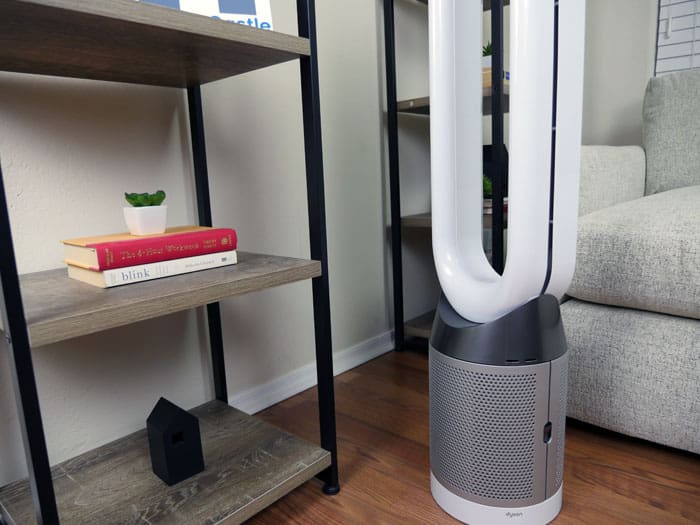
How do you control the Dyson?
Dyson air purifiers are controlled using a round display screen right below the amp, a physical remote control, a wifi-based app, or even via voice control (depending on the exact model that you have).
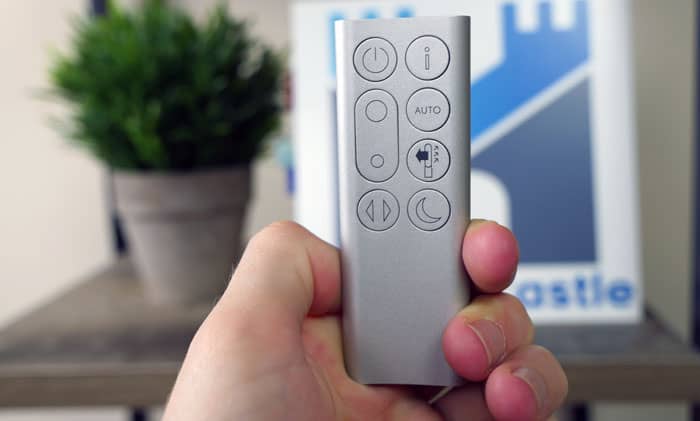
RELATED – the Best Air Purifiers for 2023 (tested & reviewed!)
How It Filters The Air
Molekule and Dyson also take different approaches when it comes to how to clean the air.
At a base level, the strategy is similar… pull dirty air in, allow it to pass through a series of filters, and then force the air out through vents which blow the clean air into the room.
But that’s about where the similarities stop.
The biggest difference in how these purifier works lies in the type of filters they use. The Molekule air purifier uses a combination of a PECO filter and a pre-filter at the base while Dyson relies on a HEPA and an activated carbon filter.
Molekule: PECO Filtration
With the Molekule, the PECO filter is the primary line of defense against allergens and airborne irritants.
PECO stands for “photo electrochemical oxidation” which is a fancy way to say that the Molekule uses a light-based chemical reaction to destroy allergens.
How does it work?
When allergens enter the Molekule system they first interact with the pre-filter which helps to catch larger particles.
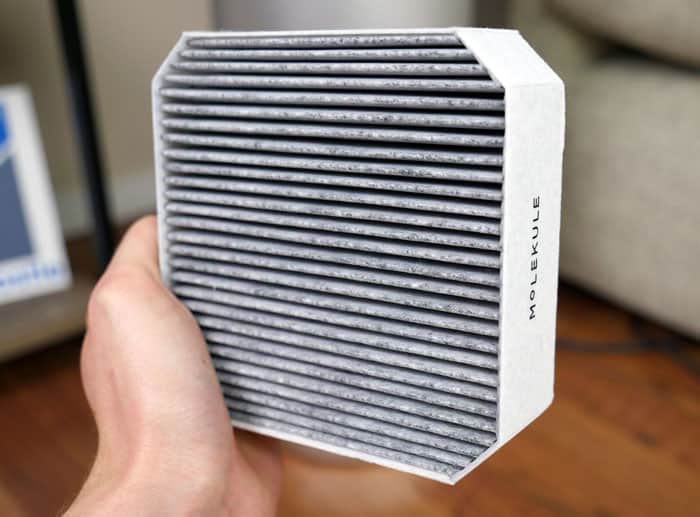
Smaller particles (even those smaller than the 0.3 microns) enter into the PECO filter where it uses light to shine on a specially designed nano-particle coated filter and destroy the particles.

NOTE: Keep in mind that the Molekule air purifier cannot work without light. If you are sensitive to light-based purifiers and prefer the look of a dark air purifier, the Molekule may not be right for you.
Dyson: HEPA Filtration
On the opposite end of the spectrum, we have Dyson that relies on traditional HEPA filtration.
HEPA stands for “high-efficiency particulate air” which means that it uses a high-efficiency mesh filter to capture and hold airborne pollutants, until you replace the filter.
HEPA filtration has been around since the 1940’s and made its way into residential home filters in the 1950’s. It’s still the most widely used type of air purification filter on the market today.
Dyson uses a large HEPA filter in addition to an activated carbon filter. The HEPA filter removes fine particulates, while the activated carbon filter helps to remove smells and gasses.
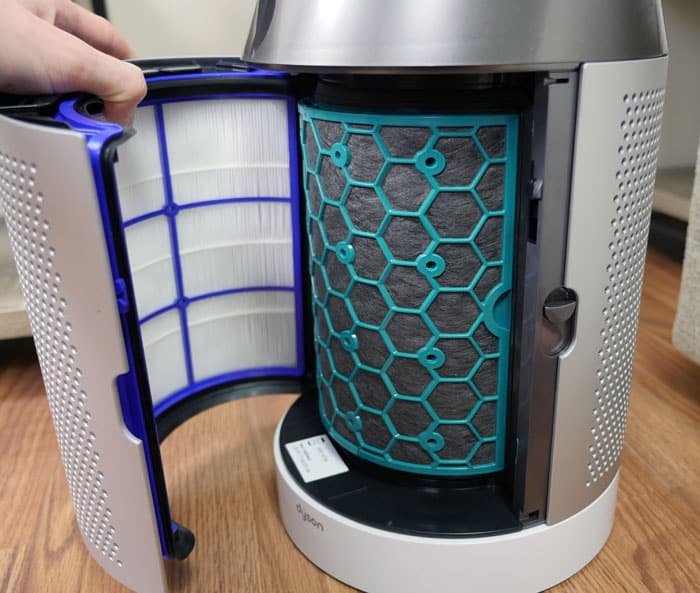
For more on HEPA, see our what is a HEPA filter FAQ.
How does it work?
HEPA filters can catch particulates ranging in size, all the way down to 0.3 microns.

Which filter is better?
While it’s difficult to say if one filter is definitively better than another, there are arguments for each.
Pros
- PECO filtration destroys the particles instead of just trapping them which prevents them from growing more inside a dirty filter or otherwise contaminating the air as it passes through.
- HEPA filtration is extremely reliable and still one of the most popular and effective methods of air filtration.
Cons
- PECO filtration requires light to work correctly which could be a problem if you are sensitive to light or just like the look of a dark air purifier.
- HEPA filtration cannot capture particulate smaller than 0.3 microns, which may include harmful allergens or airborne illnesses.
NOTE: Both PECO and HEPA filters need proper maintenance to work effectively and both need replaced regularly.
Molekule vs. Dyson Size
Concerning size, there’s a wide variety between the Molekule and the Dyson.
The Molekule air purifier is 23″ tall and 8.25″ in diameter. It weighs 18 lbs.

The Dyson air purifier ranges widely, but basically has these three categories.
Depending on the coverage area that you’re needing, any of the three purifiers above could fit the bill.
Strictly comparing Dyson vs. Molekule, the TP04 is pretty evenly matched with the Molekule, as far as coverage area.

It has almost the same diameter base (8″ vs. 8.8″), but the Dyson is almost twice the height of the Molekule. (23″ on the Molekule vs. 41.5″ on the Dyson). The large, open amp is notably the feature that makes the Dyson so much taller.
RELATED – Do air purifiers remove smells and odors?
Molekule vs. Dyson Accessories
Both Molekule and Dyson come with fairly basic parts and limited accessories. They focus their efforts on a great performing air purifier and leave out the rest. Below is a brief list of the parts and accesories that are included by each of these models:
Molekule: What’s in the Box?
- Power cord
- Pre-filter
- PECO filter

Dyson: What’s in the Box?
- Power cord
- HEPA filter
- Activated carbon filter

All four filters listed above are easy to install and simple to replace.
- For the Molekule, the PECO filter will last you about 6 months, while the pre-filter usually needs to be replaced every 3 months.
- On the Dyson, they don’t openly disclose the lifespan of the filters, but most models have the ability to detect filter status and let you know when it’s time to replace. Most other HEPA filters we’ve tested last 6-18 months before needing replacement. We would expect the same of Dyson’s.
Molekule vs. Dyson Features
Ok, now that we’ve covered most of the basic specs, let’s get to the good stuff… the cool features. Let’s dive in.
Operating Modes
Depending on the size of your space, both the Dyson and the Molekule offer a variety of air purification modes for each purifier.
The modes on the Molekule air purifier include:
- Auto Mode: In auto mode, you can input information about your room, like size, to help the purifier determine the optimal fan speed and airflow for best results. This is a nice feature if you’re not sure of the quality of your air and want the Molekule to adjust as needed.
- Boost Mode: For boost mode, the Molekule will run at the highest possible air flow setting. This mode is great for purifying spaces right after you dust or run other cleaning cycles.
- Silent mode: When the purifier is in Silent mode, the fans are running at the lowest possible sound output level (around 30 dB).
- Dark Mode: Dark mode is mainly reserved for purification while you sleep or other light-sensitive times. Keep in mind, when the Molekule is in dark mode, it won’t be able to use the PECO filter properly. Once the light is turned back on, it will treat the particles that were gathered when in dark mode.
The modes on the Dyson air purifier include:
- Auto Mode: In Auto Mode, the Dyson will detect current air quality and automatically adjust as needed to most effectively treat the air, turning up or down as needed.
- Custom Mode: This mode allows you to select a custom fan speed, ranging from 1-10. You can also customize airflow direction depending on whether or not you want the air blowing towards you or away from you (good for varying seasons). Oscillation can also be customized ranging from 0 to 350°.
- Night Mode: In night mode, you can set a sleep timer that ranges from 0-8 hours, automatically shutting off when the timer is complete.
App Control
Both Dyson and Molekule have the ability to connect to a smartphone-based app.
From the app you can:
- Turn the purifier on / off
- Check current air quality
- Send notifications to your phone
- Configure the space / how much to clean
- Changes modes
- Monitor filter replacement schedules
- Go into a dark or quiet setting for nighttime use
Small details and features of each app do vary, but basically the app lets you control each air purifier directly from your smartphone, even if you’re not nearby.
Some notes while using the app…
When we connected our phone to each respective app, we did notice that we had some issues with getting the Molekule app. We continued to get an error message and ultimately we were not able to get this app to connect to the purifier.

We did not have issues connecting the Dyson air purifier with the Dyson Link app. It was easy to connect (took 6-7 minutes) and easy to adjust settings on the purifier, as needed.
Air Quality Assessment
Both air purifiers have technology that can detect air quality conditions and adjust the purifier accordingly.
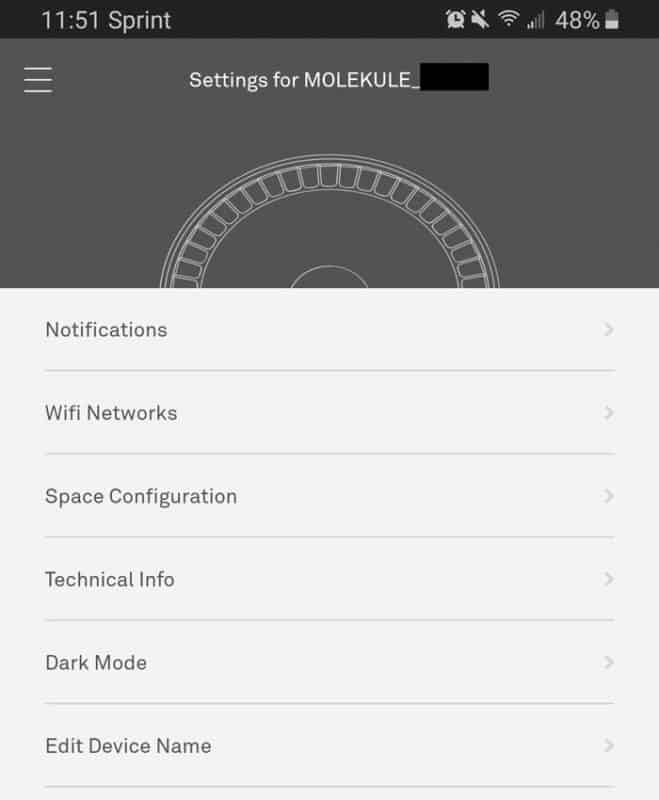
With the Molekule, this process is called “Initial Clean Up” and it’s the first step that takes place upon turning the purifier on. During Initial Clean Up, the Molekule will gauge the current air quality and figure out what it needs to do to get the air to good standings. This process can take up to 50 minutes.
With the Dyson, the air quality assessment is more of an on-going thing. The digital screen at the base of the Dyson purifier has a little graph that shown the current air quality and it will let you know when the quality drops to poor conditions.

When in Auto Mode, both the Molekule and the Dyson can self-adjust fan speed and duration to work until the air is clean, turning up or down as necessary.
Oscillation
One feature that the Molekule doesn’t have, but most Dyson purifiers do have is oscillation. The exact range of oscillation varies by model, but spans from 0° up to 350°.
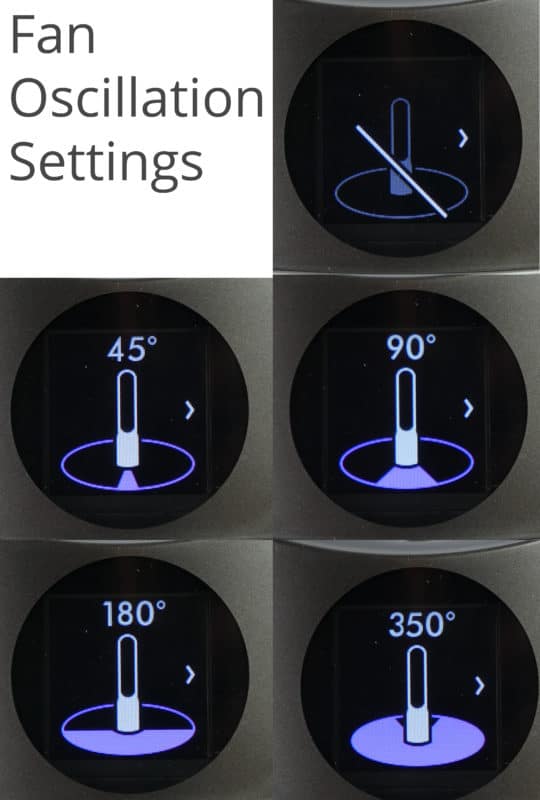
Here are the oscillation limits of other popular Dyson air purifier models:
- Dyson Pure Cool TP04, DP04, and Pure + Cool HP04: 350°
- Dyson Pure Cool TP01, Pure Cool Me BP01, and Pure Hot + Cool HP01: 70°
Again, the Molekule air purifier does not have the ability to oscillate.
Molekule vs. Dyson Performance
To really assess the performance quality of the Molekule and Dyson air purifiers, we put them to the test.
Set loose in our Modern Castle at-home testing lab, we documented overall air quality and airborne particulates before and after each purifier test.
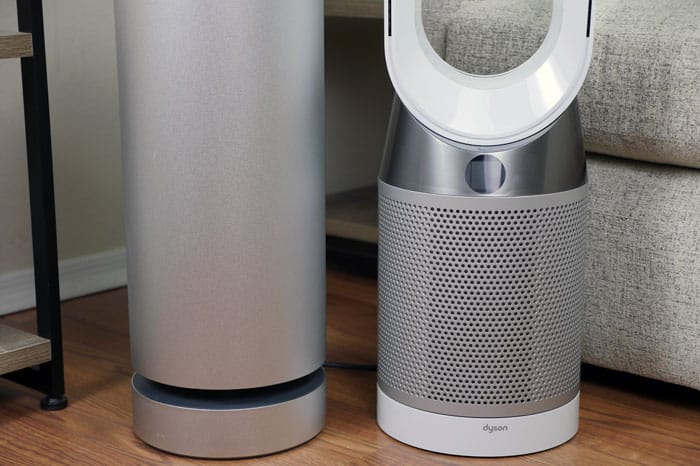
We measured the performance of these air purifiers in our home since it showed a more accurate picture of the number of allergens and harmful particulate that may be in a standard home.
We’ve got a dog, a baby, and seasonal allergens that come with any home that’s got a door. If the door is ever open, anything outside has an opportunity to come inside.
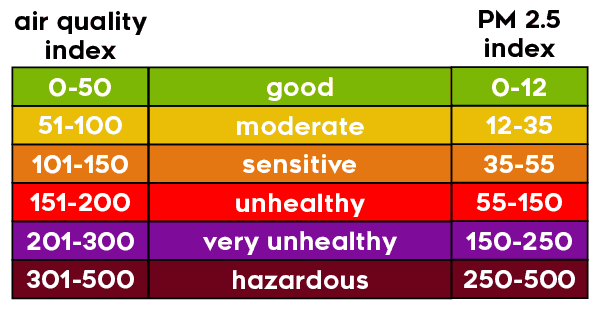
NOTE: PM 2.5 represents all particles 2.5 microns and smaller. PM 10 represents all particles 10 microns and smaller. When it comes to PM of any kind, the lower the number, the better.
How we Test
- We first took an initial measurement of the indoor air quality. We recorded overall air quality, PM2.5, PM10, and total number of particles.
- Then we put each air purifier in the room, one at a time and allowed the purifier to run for 1 hour.
- After the hour was up, we remeasured indoor air quality and documented the differences.
INFO: In order to take these measurements we used the Temtop LKC-1000S+ professional air quality detector.
Our results are shown below. We tested the Molekule air purifier vs. the Dyson TP04 air purifier:
Starting Baseline
- PM 2.5: 6.2
- PM 10: 10.7
- Particles: 379
- AQI: 25
Molekule: After 1 Hour
- PM 2.5: 0.6
- PM 10: 1.2
- Particles: 44
- AQI: 0
Starting Baseline
- PM 2.5: 7.4
- PM 10: 12.1
- Particles: 599
- AQI: 30
Dyson TP04: After 1 Hour
- PM 2.5: 0.2
- PM 10: 0.2
- Particles: 14
- AQI: 0
Performance Summaries
Although the starting baseline numbers for the Molekule and Dyson were slightly different, both purifiers ran for the same amount of time so we are assuming that the performance stats listed below would be consistent with various levels of indoor air quality.
Molekule Air Performance Summary
Within 1 hour, the Molekule removed 88% of air particulates from the medium-sized room we tested in (approx. 12’x12′). Molekule improved PM 2.5 air quality by 90%.
Dyson TP04 Air Performance Summary
Within 1 hour, the Dyson removed 98% of air particulates from the medium-sized room we tested in (approx. 12’x12′). Dyson improved PM 2.5 air quality by 97%.
How loud is each model?
Molekule Noise
39-65 dB
Dyson Noise
40-56 dB
The above dB levels are based on our in-home sound meter tests, standing about 3 feet away from the purifier. These tests are in a living room studio and include normal ambient noise within the room, which is around 39 dB.
What about ambient noise?
One thing to consider when thinking about noise output is ambient noise. That is the soft hum of noise that occurs in most environments. An example of how ambient noise can effect overall noise output is shown on the Molekule air purifier.
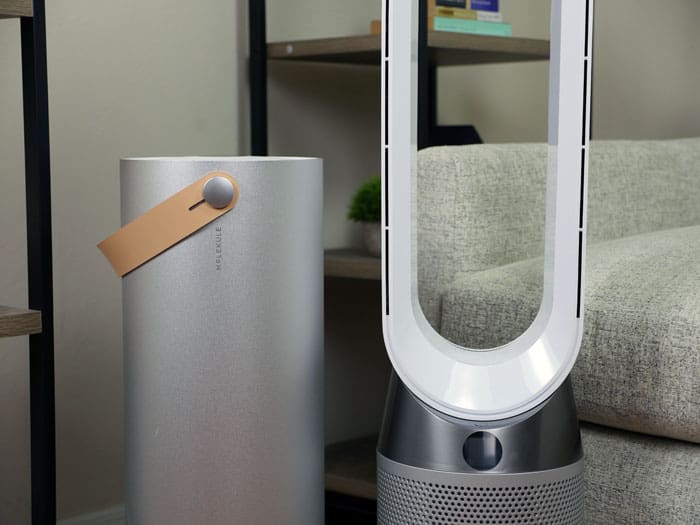
Although Molekule.com states that the max noise output is around 55 dB, we documented the noise to be closer to 65 dB. We think that the 55 dB reading is probably accurate in a room without ambient noise.
Wondering how these results compare to some other high-end air purifiers on the market? Here are a few results from comparably sized models:
- The Airocide air purifier emitted between 43 dB (on low) and 48 dB (on high).
- The Rabbit Air BioGS air purifier emitted between 40 dB (on low) and 55 dB (on high).
- The Levoit LV-H132 air purifier emitted between 40 dB (on low) and 52 dB (on high).
Setup & Usability
Getting started with both the Molekule and Dyson air purifier is a painless process. Both models come fully assembled, just plug in and get started.
Setting up the Molekule
Once you plug in the Molekule air purifier you simply select room size and mode (silent, auto, or boost). Next, it will begin the Initial Clean Up which can take up to 50 minutes.
After that process is complete you can customize your purifier as you’d like. You can:
- Change mode / adjust fan speed (Auto, Boost, Silent, or Dark Mode)
- Turn on / off Dark Mode
- Check filter status
- Turn on standby
Setting up the Dyson
The setup of each Dyson model is also easy. For the sake of this comparison, we’re going to walk through the exact model we tested, the Dyson Pure Cool TP04.
Upon unboxing, we installed the filters, plugged it in, and turned it on auto mode. There was no “Initial Clean Up” or waiting period with the Dyson and it immediately got to work.
Molekule vs. Dyson Maintenance
The maintenance of each of these air purifiers really boils down to one thing… the filters. The filters are the most critical part of each air purifier and without proper filter maintenance, the performance will notably suffer.
To properly maintain the Molekule…
- Replace the pre-filter once every 3 months.
- Replace the PECO filter once every 6 months.
To properly maintain the Dyson…
- Follow the digital / app-based prompts on replacement frequency for the HEPA filter as well as the activated carbon filter. We estimate you will need to replace the filters every 6-18 months, depending on use.
Replacement filters for both the Molekule as well as the Dyson are available directly from the manufacturer’s website or are also available from third party retailers.
Molekule vs. Dyson: What’s the better value?
If you’re looking for the absolute best bang for your buck, should you lean towards the Molekule or the Dyson?
Well, as you might expect, it really depends on what you’re looking for.
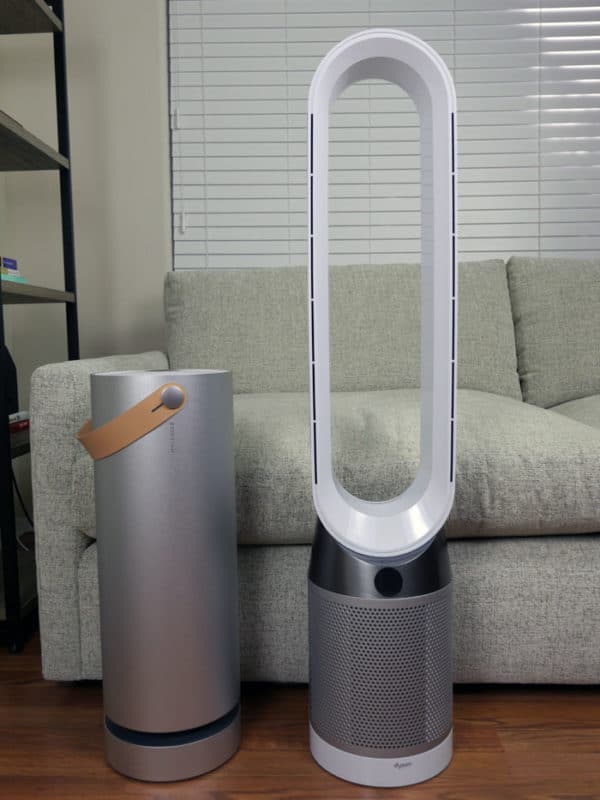
Both of these manufactures offer high-end air purifiers that are made with good quality parts and detailed craftsmanship.
If you know you need something for a medium to large sized room, you could consider the Molekule or the Dyson. Since they’re similarly priced, the value between the two brands is comparable.
Top Dyson models for this type of application would include:
- Dyson Pure Cool TP04
- Dyson Pure Cool TP01
- Dyson Pure Hot + Cool HP01
- Dyson Pure Hot + Cool HP04
- Dyson Pure Cool DP04
If you can get by with less coverage, you may want to consider the Dyson Pure Cool Me BP01. This personal sized air purifier is designed for small spaces and is considerably less expensive than the Molekule as well as larger-capacity Dyson air purifiers.
Should you buy the Molekule or Dyson?
Ok so all things considered, bottom line… should you buy the Molekule or the Dyson air purifier?
The Molekule may be best if you:
- Want PECO technology: If you are opposed to HEPA filtration, the Molekule air purifier is an excellent option. While the performance was not as good as traditional HEPA filtration on the Dyson (based on our in-home tests), it certainly wasn’t bad by any measure.
- Want a modern purifier: If you want a purifier that doesn’t scream “AIR PURIFIER”, the Molekule is a great option as well. It has a modern aesthetic, has limited grooves and crevices for dust to collect and is easy to use.
To learn more or to buy the Molekule air purifier, check them out here.
The Dyson may be best if you:
- Want the best performance: Between the Molekule vs. Dyson, the Dyson TP04 outperformed the Molekule during our tests. It is even more impressive considering the initial baseline measurement showed poorer air quality than the quality of air that the Molekule tested in.
- Want more options: Dyson has a much wider selection of purifier models on the market than the Molekule. If you’re looking for difference sizes, styles or features, you may be pleased with some of the other models that Dyson has available.
To learn more or to buy the Dyson air purifier, check them out here.



